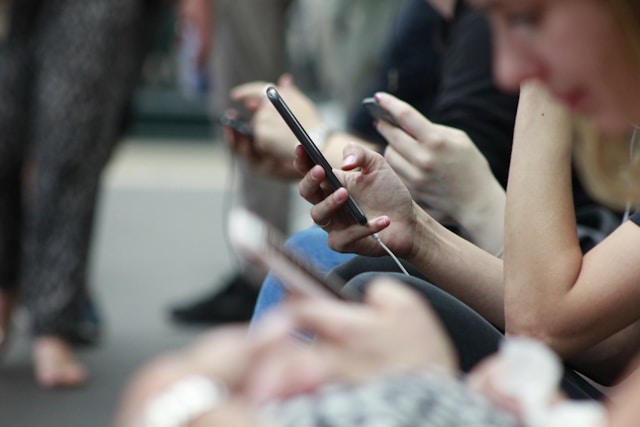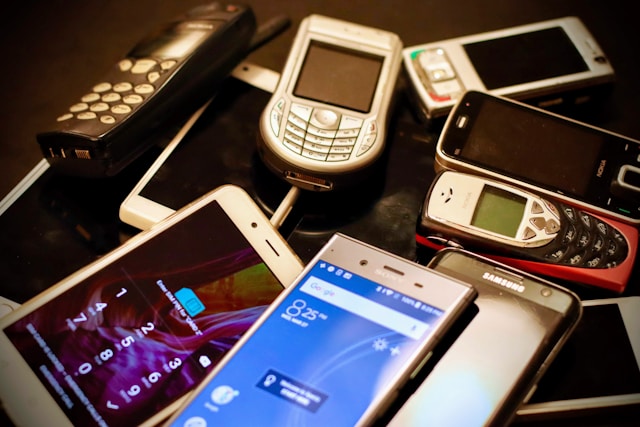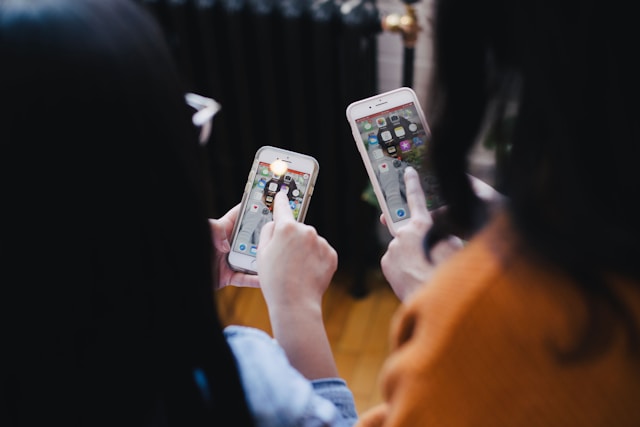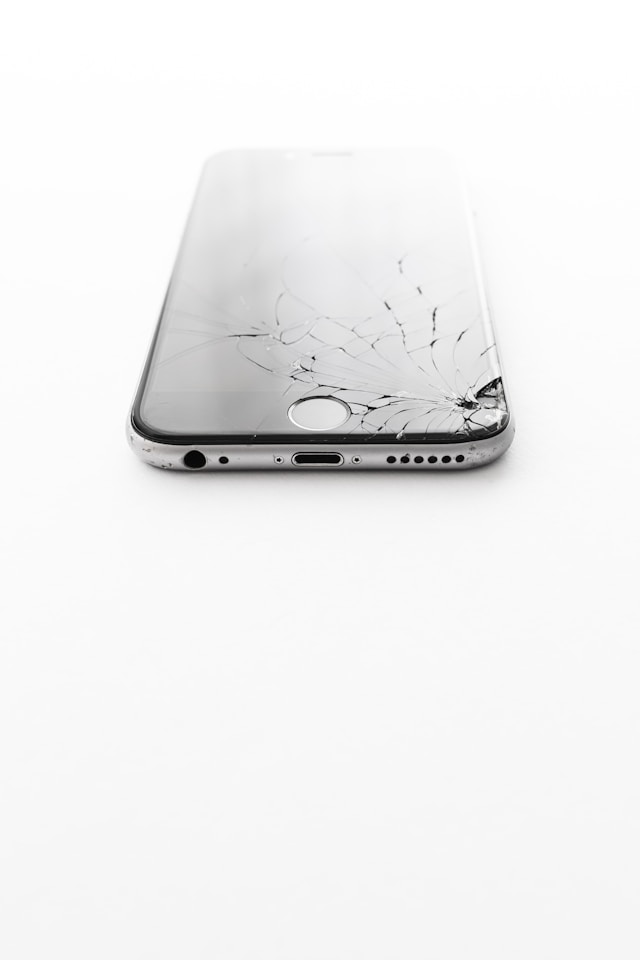The 3G Shutdown and You

- Summary:
- Mobile network operators–Spark NZ, 2degrees and One NZ–will shutter their 3G mobile networks by the end of 2025.
- A significant number of mobile phones may not be able to make calls–including emergency calls–because they need to support both 4G and VoLTE. Many may not be aware that this affects them.
- You can take steps to check whether your phone is compatible with 4G and VoLTE. (1) Check with your mobile operator that they support your model of phone and (2) test VoLTE calling on your phone. This is important to do before the shutdown.
- There is a large risk that a sizeable number of mobile phones may be unable to make emergency calls after the 3G shutdown. A coordinated effort should be taken to estimate the size of the potential impact, raise awareness, and to support the public through this transition in an equitable manner.
All three mobile network operators–Spark NZ, One NZ (formerly Vodafone) and 2degrees–have given notice publicly that they intend to close down their respective 3G networks at the end of 2025. 3G stands for third generation mobile communications. The most recent generation is 5G. Closing down the 3G network will free up those frequencies currently used by 3G to allocate to 5G usage. While the majority of customers who have purchased phones from local mobile networks in the last couple of years will experience no negative impact in the ability to make calls after the 3G shutdown, there are still a significant number of phones–including 4G phones–in use that may not be ready or able to make voice calls, including emergency calls.
What is the extent of the problem?
To give an overall estimate of the number of mobile phones, the Commerce Commission reported that there were 5.9 million mobile connections in Aotearoa in 2022. In May 2024, Opensignal stated that by early 2024 in Aotearoa, people were spending between 6.9% to 7.8% of their time on the 3G network. While this was a lower level than in 2022, the rate of decline had trailed off leading into 2024. At the beginning of 2024, Spark stated that around 5% of their customers were using 3G. But even if we now have a lower percentage of phones that are using 3G, let’s say 4% across all networks, that would amount to around 235,000 phones.
On January 17, 2025, Chris Keall from The New Zealand Herald quoted a telecommunications executive as stating:
“We can see up to 200,000 to 300,000 3G phones and tablets out there in use. But if you ask people on the street, hardly anyone knows about it. There are lots of elderly people who might not be aware of the consequences.”
But note that this is not the full picture. There are a number of older phones that use 4G for data but do not support the VoLTE standard that is necessary for voice calling over 4G. Moreover, there are some 4G phones that are configured to use the 3G network for emergency calls. (More on these technical terms below.) The number of phones that fall into these categories are not accounted for in the above measures of phones and devices that are currently using the 3G network. Moreover, people may not be aware of these issues or the fact that they cannot make emergency calls.
This is consequential: if the 3G network is shut off and people have not been successfully transitioned off 3G to 4G with VoLTE then it is not just the inconvenience that they might not be able to make calls; there is a danger that they might not realise that they are unable to make emergency calls. Clearly this doesn’t impact only the owner of the phone but also anyone who may need their assistance in an emergency. To use an analogy, you wouldn’t want to be in a situation where you didn’t know that the smoke alarm in your home wasn’t working. But the 3G shutdown might effectively create a situation where mobile phone companies leave some people with devices that cannot raise an alarm in an emergency and no idea that this is the case.
The major networks have sent emails and text messages to customers with mobile phones that may not be VoLTE capable to notify them to check their settings and–failing that–to upgrade their phone. But note that there may be a variety of reasons why people may not upgrade:
- they may not understand the potential consequences of not preparing for the 3G network shutdown.
- they may have more urgent demands on their time when the notification arrives and so may not pay it much attention.
- they may not have the money to upgrade to a phone with comparable functionality.
- they may have concerns that any message to upgrade their phone is a potential scam.
- (If you are suspicious, here is some information from the Telecommunications Forum about identifying scams and reporting telco scams.)
- they may have hesitancies about upgrading to 5G-enabled phones.
- I have collated links to some science resources about 5G and health on this page.
Relatedly, while the mobile network operators are primarily concerned about mobile phones, there are numerous other types of devices that may rely on 3G, some of which are used in emergency situations. Here is an incomplete list of 3G devices that may be affected (beyond mobile phones):
- Tablets (Spark NZ has a list of Samsung and Apple tablets that are supported)
- Smart watches/wearables (Spark NZ has a list of Samsung and Apple wearables that are supported)
- Vehicle/Fleet tracking devices (some examples here and here. The FAQ section on this site lists a number of affected devices)
- Alarm dialers (examples here and here)
- SOS devices (example here. See the following webpage for SOS devices previously sold in Aotearoa, including 2G devices. If these are currently on One NZ’s 2G network, this too is planned to shut down at the end of 2025)
- EFTPOS machines (some 3G units may need to use WiFi. Some examples here and here.)
- Smart meters (the relevant companies are upgrading meters)
- 3G signal boosters (example here)
- Medical alert devices (example here)
- Security systems (some may use 3G for backup communications. Commentaries here and here.)
- E-book readers (e.g., older Kindle with 3G will now rely on WiFi connection)
- GPS job tracking on farms (example here)
- Farm equipment (example here)
- Gate controllers (example here)
- Emergency phones in lifts (see advice to upgrade here)
- 3G m2m modems (example here)
- Security cameras (example here)
In Australia, after the October 28, 2024 shutdown of the 3G network, Fire Rescue Victoria experienced failures when a number of their vehicle tracking and gate unlocking devices were rendered inoperable. You can read more here.
Note that emergency devices like SOS devices and medical alert devices may rarely contribute to 3G usage statistics as they are used only for emergency situations.
Why is the 3G network being shut down?

There are a number of reasons why the 3G networks are being shut down. One reason is that the 3G frequencies may be reclaimed to expand the 5G network. The 3G networks currently operate at lower frequencies than 4G and 5G and they can travel further than waves at higher frequencies. Because of this, one argument for repurposing these frequencies for 4G or 5G means greater coverage for this technology in rural areas. 4G and 5G technology is more efficient when it comes to data transfer speeds and latency, enabling data-driven devices to be used in innovative ways wherever there is coverage. (Including for all of the various kinds of devices and applications that were listed in the previous section.)
4G is a mobile communication standard that specified high transfer speeds. 4G just means the fourth generation of mobile communication. At the time the 4G standard was set it was an aspiration and no company in practice could meet the specified data transfer rates… but they were working on it. “LTE”–standing for “Long Term Evolution”–arose as a marketing term to distinguish faster mobile data connections, even if those connections didn’t technically meet the speeds required for 4G standards. Technology also was developed for sending voice data over these new networks. This protocol was called VoLTE, or Voice over LTE. The quality of calls from VoLTE is much better than the quality of calls using 3G, and so some mobile companies also refer to it as HD Calling (or High Definition) calling. And often you will see 4G/LTE calling used as a label to describe the same thing. But the “LTE” just means that the speeds are not fast enough to technically qualify as 4G according to the specifications for that standard. So better quality calls with 4G and VoLTE is another reason to move to the 4G network.
Given these reasons, and the lower levels of 3G use compared to 4G, the mobile networks are keen to shut down the 3G network (which will give cost savings) and invest in expanding the 4G and 5G networks. Consequently, when the 3G network id shut down, you will need a mobile that supports both 4G and VoLTE in order to make calls (including emergency calls).
How can you get prepared? (Or help others)

Here I am going to focus on mobile phones. The prevailing message from mobile providers is for customers to check their phone’s compatibility with 4G/VoLTE and upgrade their phones before the 3G closure if needed. It is not enough that the phone can use 4G for data, your phone must also support the VoLTE protocol, which is the standard for voice calls over 4G networks. 4G and VoLTE compatibility is necessary for voice calls on the 4G network, including emergency calls.
There are a couple of things you can do to gain confidence that you are ready: (1) check that your phone is on your mobile provider’s list of supported mobile devices and (2) confirm that you can make a regular call over 4G using VoLTE.
(1) Check that your phone is supported by your mobile network
First, check that your phone supports 4G/VoLTE on your local network. The mobile networks have lists of supported makes and models of phones here:
- Use this 2degrees tool to check your phone’s IMEI number for 4G and VoLTE compatibility. Here is a 2degrees compatible mobile list.
- One NZ list of supported mobile phones.
- Spark NZ tool with instructions to check your phone’s IMEI number to check 4G, VoLTE and emergency calling compatibility
The Spark NZ tool in this list is useful because it also provides an indication of whether the phone uses 4G and VoLTE for emergency calls. Some older 4G capable devices were configured to use 3G networks for emergency calling. This is important information to know before an emergency!
(If your mobile plan is with a local company other than the above three, that company will use one of these three mobile network operators. You can check which mobile companies run on which networks here.)
(2) Make a test phone call to confirm that your phone is ready to use 4G/VoLTE
Second, even if your model of mobile phone is listed as supporting 4G and VoLTE on local networks, it is still worthwhile to test it yourself to confirm whether you can make a voice call using 4G. This is because there are a number of other factors that might need to be considered.
Note: it is important that you DO NOT test 4G with VoLTE calling compatibility on your phone by dialling emergency services as this will interfere with real emergency calls!
If your phone displays that you are connected to 4G on the status bar on your phone then you could simply try phoning a friend using the mobile phone’s call functionality (i.e., do not use apps like Messenger or WhatsApp to call as these may use data over 4G but do not use the VoLTE standard). Once the call is connected, different phones may show different indications that it is using VoLTE. Here is a list of indicators from Mercury that your current call is using 4G and VoLTE:
You can see if the call you are making is a 3G or 4G call by checking the following:
* Apple iPhone: The 4G icon will remain in the status bar.
* Samsung: HD calling appears while placing a call. HD also appears in the call screen during the call.
* Huawei: HD appears if the call is connected or has gone to voicemail. No icons appear while the phone is ringing.
* OPPO: VoLTE appears in the status bar.
* Nokia: VoLTE appears in the status bar after pulling down the notifications menu.
If you don’t see these icons, the call is most likely using standard 3G (HD Voice).
If you are unsure, another option is to use Hugh Jeffreys’ iTest app, which you can download for a small fee. It runs multiple mobile phone device tests including testing whether your phone supports VoLTE calling.
If your phone passes these checks, you can have a good degree of confidence that your phone will be able to make regular calls after the 3G closedown. However, it is also important to note that some older phones may use 4G/VoLTE for normal calls but that model of phone may enforce use of 3G networks for emergency calls. Juha Saarinen wrote the following explanation for this in March 2024:
“Further technical information received on the reason why some 4G handsets switch to 3G for emergency calls say this is how the older 3GPP Release 8 standard handled them. The standard was “frozen” in 2008, and meant that emergency calls to 111 in New Zealand […] were forced to 3G. Release 8 devices are often older than 8 years by now.”
James Parker, an Australian IT and Networking specialist, has noted that 4G phones with VoLTE that use 3G for emergency calling do not have that setting “hard-wired” on the phones, but is a matter of software configuration. Note that the Spark NZ tool includes information about whether your phone will use 4G/VoLTE for emergency calling but as VoLTE configurations may differ among mobile networks there has not been a guarantee of VoLTE support across all networks. So, if in doubt, check with your mobile company.
If your test call is unsuccessful, then here are some further potential issues that 2degrees have identified, though these could similarly apply to the other networks:
- You may be in an area that does not have 4G coverage.
- You might have a 4G/VoLTE capable mobile but need to install the latest software updates.
- You might have a 4G/VoLTE capable mobile but have the necessary 4G calling settings turned off.
- The following instructions to remedy this are from One NZ:
- Then check that 4G/5G data is enabled in your phone settings as well as 4G voice calling/VoLTE.
- Head to your mobile network settings and switch the 4G/VoLTE calling toggle to “On”
- For Android phones: Go to Settings > Connections > Mobile networks > VoLTE calls enabled
- For iPhone (iOS) This is usually already enabled for most iPhones: Go to Settings > Mobile > Mobile Data Options > Voice & Data (ensure 4G or 5G is “On”)
- You might have a 4G/VoLTE capable mobile but do not have a 4G sim card.
- Check with your mobile phone operator if you suspect this. However, the New Zealand Telecommunications Forum states that “If your old SIM card fits into the new devices’ SIM card slot, then you are sorted.” This suggests that all nano sim cards should be OK.
- You might have a 4G phone for using data but the phone doesn’t support VoLTE for phone calls.
- The Spark NZ tool for checking 4G compatibility should be able to give you an indication of this. If so, you will likely need to upgrade.
- If your phone has been purchased from overseas, it may not be compatible with local networks for 4G/VoLTE.
- Your phone needs to be able to use the same frequencies for communication as local mobile networks.
- See One NZ frequencies here: What are the mobile network frequencies used by One NZ?.
- See Spark NZ frequencies at the bottom of this site: Spark NZ network coverage. (If you use Spark, then you can check mobile compatibility with their 4G compatibility tool.)
- 2degrees is here: 2degrees | Powertec Information Portal.
- Another online phone/network compatibility checker tool is available here: FrequencyCheck – Mobile Network Compatibility Search for Unlocked Phones and Devices (but there are no guarantees as to the accuracy of the information).
- Your phone needs to be able to use the same frequencies for communication as local mobile networks.
So this really points to a number of factors that need to be correct in order to enjoy calling via 4G: a 4G phone that is VoLTE capable (including for emergency calls) with relevant updates installed on the phone, a 4G sim card, the 4G calling settings switched on, and use of that mobile phone in a region that has 4G coverage.
If you do purchase a phone, you can recycle your old phone for free with RE:MOBILE. There are hundreds of store locations where you can drop off our old device.
So what’s the big deal? Haven’t we had to move to new technology before?

The reason why the shutdown of the 3G networks is so significant is because of its success in becoming ubiquitous in many devices that we rely on (as listed at the top of this page), and in particular for mobile phones. Some of the ways we use these devices are vitally important, particularly in relation to emergency services. And while many people with newer devices will experience no interruption, there is still a significant number of people who still require support for a transition to 4G.
Earlier, I stated some of the benefits of moving to newer mobile technologies. But there are still many people who may be unaware of the need to ensure that their mobile phones are 4G and VoLTE compliant. And this is likely to disproportionately affect older people.
Of course, we have moved away from old technology before. For example, we have moved away from copper landlines to fibre. So maybe we can look to this as an example. Even in this case, the importance of being able to contact emergency services has been taken seriously. In Aotearoa, the Telecommunications Commissioner is responsible for maintaining, monitoring and enforcing the “111 Contact Code“. The code requires that suppliers of landline services remind customers that they may be unable to make emergency calls during a power cut (which they could previously do with copper landlines). The code also ensures that the providers support vulnerable customers:
Home phone customers who don’t have an alternative way to contact 111 in a power cut can apply to their provider if they are at particular risk of needing to call emergency services for health, security or disability reasons. If they qualify, their provider will work with them to determine the right product for their particular needs, at no cost to the consumer.
The Telecommunications Commissioner has taken a number of companies to court–including One NZ–over failures to comply with the 111 Contact Code.
The term of the current Telecommunications Commissioner–who monitors the telecommunications market–ends in the middle of 2025. Last year there was speculation that the position might not be filled (though this was denied by the Hon Paul Goldsmith, Minister for Media and Communications). You can find out more information on the official roles and organisations responsible for the telecommunications market on this page.
In Australia, where the 3G networks were shut down in October 2024, the concern about the number of devices configured for 4G calls normally but that might switch to 3G for emergency calls was sufficient to prompt the involvement of the Australian Minister for Communications, Michelle Rowland, to establish a mobile industry Working Group with the specific task of ensuring a safer 3G shutdown. The major Australian mobile telecommunications networks ran large communications campaigns and gave away tens of thousands of mobile phones to vulnerable customers before the shutdown. I have described the Australian 3G shutdown and the importance of emergency calling considerations in more detail on this page.
In comparison to our neighbour Australia, it seems that insufficient attention is being paid by mobile services in Aotearoa to the risk to the public of not being able to contact emergency services after the 3G shutdown. Relatedly, there are currently inadequate provisions to support vulnerable customers through the 3G shutdown.
Disclaimer: This site is not supported or funded by any organisation from the telecommunications industry. While all possible care has been taken to ensure accuracy of the claims made on this site, this content is intended to supplement–not to replace–advice from your mobile provider. I have aimed to include reputable sources where possible to back up any claims. Information on this website is provided for educational purposes. – DW
Page Last Updated February 5, 2025.